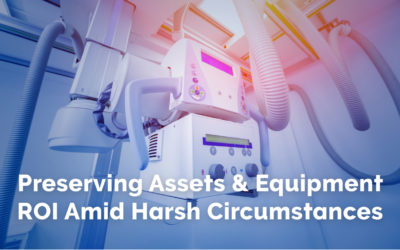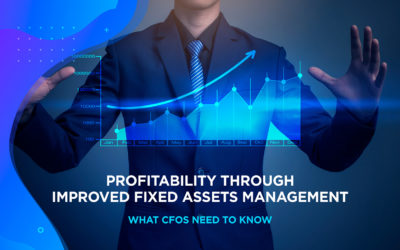Successful computerized maintenance management systems or CMMS vendors enable organizations to better simplify maintenance and inventory management. Transitioning to a CMMS helps organizations better optimize all maintenance- and inventory-related practices.
Main functions of CMMS software
CMMS software offers organizations a lot of different toolsets. Each can be deployed as part of a comprehensive management system or individually according to the needs of the organization.
Some of the features that CMMS software provides include:
- Work order management
- Plan preventive maintenance task planning
- Asset performance and reporting
- Asset tracking
- Inventory management
- Audit readiness
Appropriately deploying these features can help organizations modernize their maintenance and inventory management practices and realize long-term business success.
CMMS software can bring more value to the organization by reducing unplanned breakdowns, fine-tuning inventory control, and optimizing machine and plant availability and performance. Ultimately, all of these benefits all generate one result; a greater ROI for the organizations.
To better realize these benefits, let’s look at the areas in which CMMS can be implemented as a cost-saving measure.
1. Maintenance
In many asset-intensive organizations, machines and their components are used in a run-to-failure method. This reactive maintenance approach means maintenance operations are only performed after a breakdown has occurred.
While this maintenance strategy may seem counterintuitive due to several drawbacks like costly unexpected shutdowns, decreased asset life expectancy, and considerable safety risks, the reality is that many organizations still rely on this reactive approach.
A recent study found that nearly 60 percent of asset-intensive facilities still use reactive maintenance as their primary maintenance strategy.
CMMS software enables organizations to transition from reactive maintenance to predictive or condition-based maintenance. This allows organizations to better monitor the asset’s health and proactively address maintenance problems before they result in costly breakdowns. When CMMS software is used in conjunction with a more proactive maintenance approach, asset performance increases and maintenance tasks are better optimized, as are resources and employee labor.
Organizations can also realize significant financial benefits. Maintenance costs experience a reduction of up to 25 percent, up to 70 percent of breakdowns are eliminated, and required capital investment is reduced by 5 percent.
2. Inventory control
An often underutilized feature of CMMS software is inventory management. This unsung hero enables organizations to elevate their asset maintenance management by ensuring the right asset, item, or component is properly stocked and located in the right place.
This allows businesses across any organization, from retail to manufacturing, to access the right asset at the right time. By maintaining an accurate asset register, organizations ensure they have the right amount of stock based on historic and trackable usage rates.
Without CMMS software to assist, inventory management can quickly become imbalanced. Organizations may find that they have too much stock of obsolete inventory or too little stock of in-demand items.
Without the right inventory management process in place, stock can be difficult to find, further increasing downtime that could have been easily avoided.
Our CMMS software comes with an Asset Register Development & Tagging feature that makes inventory management a breeze. The asset tagging process flow makes it easy to register both fixed and movable assets in an easy-to-use asset register.
This register provides an in-depth analysis of inventory levels and the locations of moveable assets. This reduces stock overflow and waste, deters asset losses, and eliminates the guesswork in reordering and inventory reporting.
3. Asset costs
We’ve briefly examined how CMMS software can help better optimize maintenance practices which results in overall cost savings. This optimization also enables organizations to fully optimize the lifecycle of assets to better make cost-effective decisions.
Every asset goes through four key stages:
- Planning
- Acquisition
- Operation and maintenance
- Decommission and disposal
While each of these stages determines the profit generated by your asset, operation and maintenance is the most critical.
Assets that continue to generate ROI can do so by maintaining optimal operational performance and reliability. Proactive maintenance approaches like condition-based maintenance allow organizations to forecast when asset investments should occur.
Being able to fully assess the future capacity and reliability requirements of critical assets in an organization will go a long way in implementing expansion. Being able to defer operational and maintenance investments enables organizations to prioritize capital projects that produce greater ROI.
The opposite is also true. Without the use of CMMS software or a proactive maintenance approach, most investments must be injected into ensuring assets maintain current conditions and performance.
Having to invest an organization’s limited capital on asset maintenance will negatively affect long-term revenue and growth.
4. Employee accountability
An organization’s most valuable assets are its employees. In today’s highly competitive business world, a productive workforce is an incredible competitive advantage. Creating a culture of accountability leads to better job satisfaction and ensures performance expectations are met.
CMMS software can make it easier for teams to streamline work orders, giving staff autonomy with clear and management expectations. By expediting the maintenance management process, employees can enjoy higher levels of cohesion, promoting productivity.
Greater productivity levels help organizations to increase profits.
CMMS also ensures that jobs are safer for everyone involved. When facilities have an over-reliance on reactive maintenance, there’s limited visibility on asset health. This leads to a greater potential for on-the-job accidents to occur.
When accidents happen, employee productivity and morale drop. This decline can have a cascading effect, negatively impacting other aspects of the business, from asset maintenance workflows to revenue profitability.
CMMS software allows organizations to implement a proactive maintenance strategy that leads to improved health and safety in the workplace. When maintenance teams can better map out when assets will fail, the right measures can be taken, such as ensuring maintenance tasks are performed by qualified technicians.
A CMMS platform also enables maintenance teams to better rely on information about standard operating procedures, safe handling instructions, and standardized checklists for tasks. This ensures tasks are done according to best practices, improving the safety and efficiency of the workplace.
5. Time management
Being able to streamline tasks and assign work orders to the right employee ensures maintenance orders are completed in an efficient and timely manner. As a result, more maintenance resources are readily available, machine availability increases, and downtime and maintenance costs are kept to a minimum.
As work orders can be automated through CMMS software, maintenance teams can improve their response times. This makes scheduling predictive maintenance more efficient, ensuring machines and facilities continue to run smoothly.
Without the right CMMS solution, businesses must manually manage maintenance activities, work orders, and labor costs. These inefficiencies quickly add up, draining a business’s time and resources. Every little inefficiency can affect the company as a whole, leading to more breakdowns, downtime, and ultimately, overspend.
The improved response that CMMS software brings wastes less time and results in better planning. Being able to anticipate every element of the maintenance schedule ensures resources are used as effectively as possible.
Conclusion
Implementing CMMS software across these five areas can provide incredible cost-saving benefits. Having one centralized platform with accessible real-time data can provide a defense against unplanned downtime, machine breakdown, and inappropriate resource allocation.As business scales, it becomes more and more difficult to manually manage a critical asset through its entire lifecycle. Even if your business uses an effective spreadsheet, spreadsheets are still prone to human error. One critical mistake can result in your business losing thousands of dollars.
A dedicated CMMS platform is a much more powerful reporting tool than Excel, allowing for a more complex analysis of every aspect of the business.
Be it for maintenance activities, inventory management, or cost control, CMMS can be customized to suit any requirement, empowering companies of all sizes to streamline business processes and save money.
Ready to start realizing all the benefits that CMMS software brings? Get started by getting in touch with one of our Industry Sector specialists, and schedule for a demonstration of Aladdin, our cloud-based CMMS program. By talking to our experts, you can better understand why using CMMS is the best investment you can make for your business today.




0 Comments